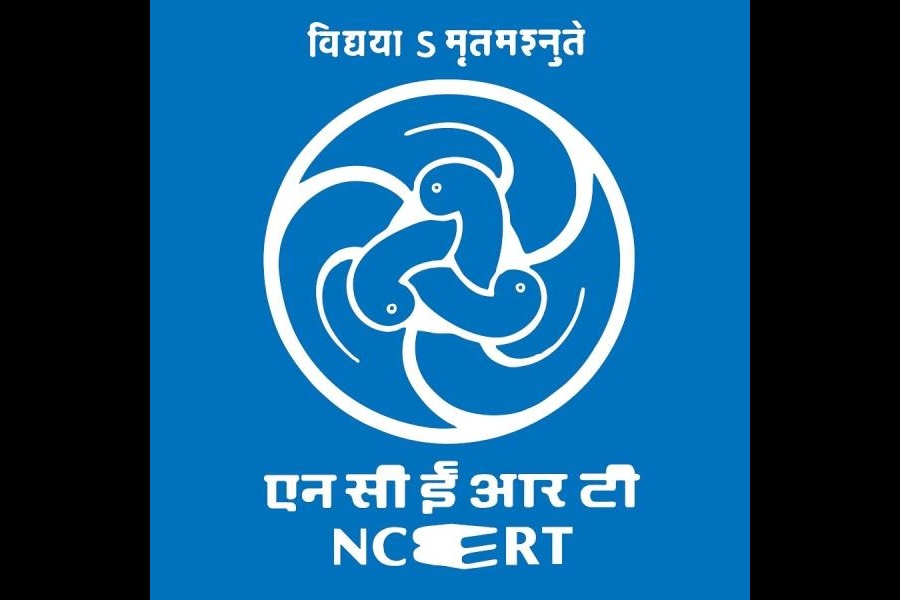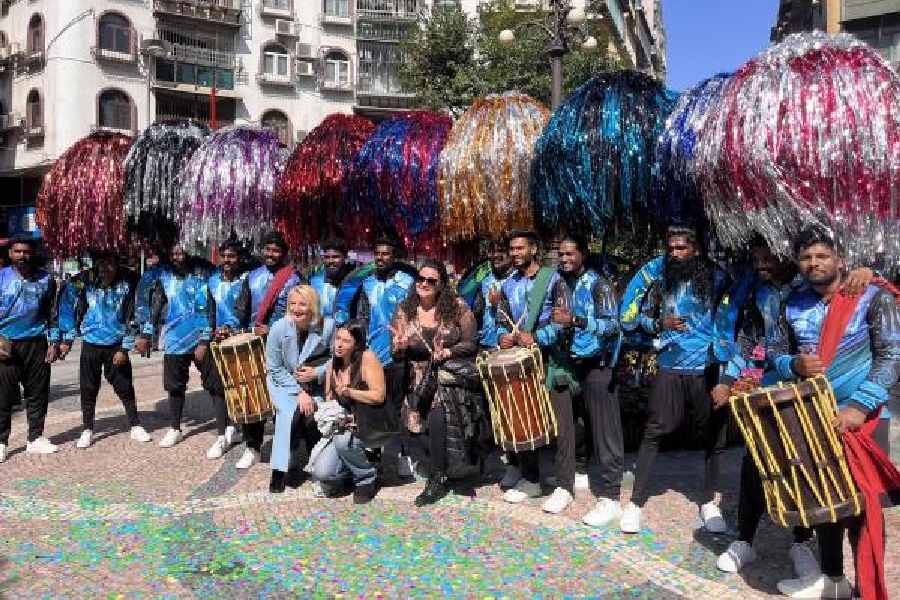 |
| Her story: Lushin Dubey, who has mesmerised Mumbai audiences with her Lady Macbeth act in Alyque Padamsee’s Macbeth, breezed through town last Saturday with Muskaan. Staged at Tollygunge Club, the production had Dubey playing a woman in her 40s who gets HIV from her husband. Picture by Bishwarup Dutta |
Farces in Hindi and Bengali romped merrily through the city recently. While Ashwin Gidwani’s presentation of Mahesh Dattani’s Arre! Mad about Money!! flew down from Mumbai to Kala Mandir, local debutantes The Performers’ Wing winged it over Gyan Manch with Sukumar Ray’s Lakshmaner Shaktishel.
Fans of Dattani may protest that he could not have penned a drama with such a crass title. Absolutely right. Paritosh Painter concocted this Hinglishism for his translation of Dattani’s first full-length play, Where There’s a Will. But other than that and some resequencing and updating of scenes (Dattani wrote it 20 years ago), he has stuck to the script.
In this comedy of conflict between generations, the ground constantly shifts beneath the audience’s feet. As the patriarch blusters about the clout he wields, blasts his wastrel son and domineers over the women, senior self-made men in the auditorium nod in assent. By the time we reach the end, however, the tables have turned. The wife, mistress and daughter-in-law join forces to expose his tyranny, so the female and younger spectators have the last laugh.
The production clicks thanks to the text, not the acting. Only the stalwart comedian, Paintal, holds his own in the main role. Suchitra Pillai is leaden as the mistress, whereas Rimta Jaykar (the wife) and Dipika Amin (the daughter-in-law) behave more naturally. Pushkar (the son) has a poor delivery with a pronounced lisp.
Staging Lakshamaner Shaktishel on 9/11 and publicising it with pictures of monkeys, planes and the twin towers made the objective of The Performers’ Wing clear. They would interpret Ray’s classic in its original spirit as full-tilt pastiche, but from an adult perspective and against a contemporary political backdrop.
So we see Rama’s army in camouflage fatigues with toy guns and Hanuman’s cohorts going ape in RSS vests and shorts. Ravana appears in Batwoman garb and Yama in black mini-skirt. Ravana sends Sugriva packing by tossing a cardboard cut-out of an airliner at him.
All this creates an air of utter madness and some great slapstick, though anyone would find it difficult to rationally link associations behind the symbolism.
Joyraj Bhattacharjee’s exceptional acrobatic skills rubbed off on his direction of the team. Particularly noteworthy among them, because they had characters to convey as opposed to caricatures, were Parni Ray as a sentimental, cowardly Vibhishan and Rohini Chaki as an aggro minister Jambuban.
Impressive cameos included Yajnaseni Das (Ravana) and Sukanya Chakrabarti (Yamadut). Abhijay Gupta’s towering and deep triple-level set of bamboo, wood and rope looked superb.
Return to roots
 |
| In the woods: Michiko Watanabe as Justice and Bernhard Berchtold as Christghost perform at a rehearsal for Wolfgang Amadeus Mozart’s Die Schuldigkeit des Ersten Gebots during the Salzburg festival in Austria. (AFP) |
An urge to archive the fading traditions of rural Bengal has pushed film-maker Ashoke Viswanathan to capture the life and times of village folk artistes on celluloid. The result: two documentaries, Folk Theatre of Bengal and Legend of Manasa, funded by Eastern Zonal Cultural Centre. Both were screened at Max Mueller Bhavan recently.
In Folk Theatre of Bengal, Viswanathan embarks on a fascinating tour of the districts, starting with Ghatal and Hooghly where villagers still practise the folk form Bharjatra. The journey takes him to the Alkaap artistes of Murshidabad who have slowly lost out.
“Folk theatre reflects a multiplicity of culture and traditions that emanates from society,” says Viswanathan.
In Legend of Manasa, Viswanathan analyses the socio-political reasons behind the emergence of Manasamangal. Viswanathan has Madhumanti Maitra as co-narrator.










